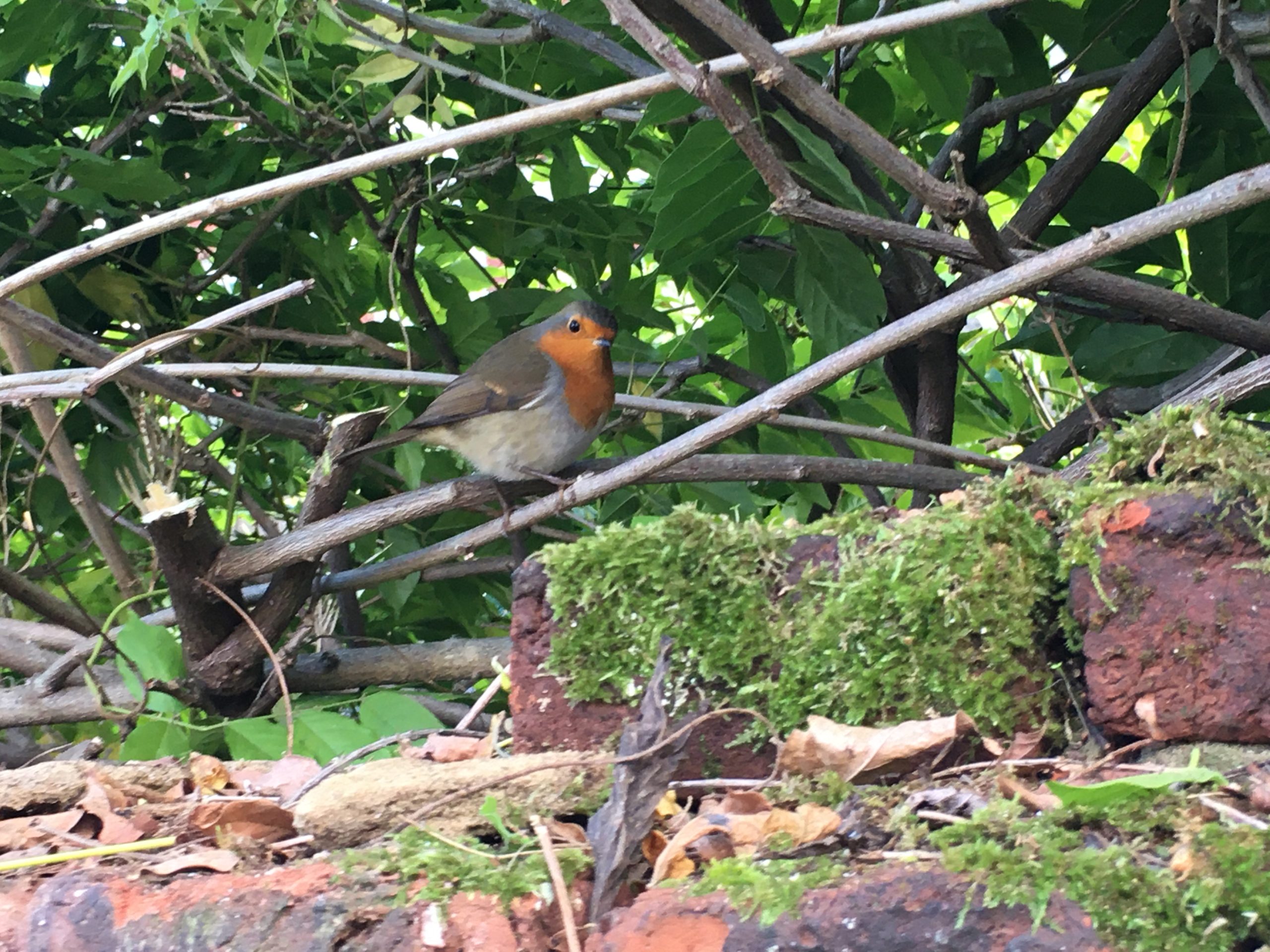The wet and windy weather of early December has given the Gardens a good shake up and finally all the leaves have fallen. The mountain of collected leaves in our compost area will now gently decompose over the next year or two into leafmould, the gardener’s friend and ally!
We gave the rampant wildlife hedge on the west wall behind the Chapel a good cut back and tidy. In doing so we have managed to create a couple of places where the undergrowth could be cleared back to reveal glimpses of the old chancel wall behind. This wall, (originally stone and flint, but shored up with brick in parts by over-zealous Victorian restorers) was part of the original 13thc Friary church. The shrubbery will benefit from it’s winter trim and will grow back thick and lush in spring, providing a choice nesting site for a variety of birds and small mammals in the new year.
We had a very small window of time to complete another job this week that has been on the “to do list” for a while. The grass area beneath the two large cherry trees at the end of the entrance path has suffered badly from the deep shade cast by the trees all summer. Finding the right time to prepare the ground and sow some hardwearing, shade-tolerant grass seed has been key. Up until now the continuous leaf fall from the cherries has meant that seeds would not germinate under the blanket of leaves and would be disturbed by our raking. We have been hoping that by the time the final leaves have fallen the temperatures would not be too cold for the grass seed to germinate. We have chosen a specialist “winter green” mix, that will tolerate low temperatures and germinate in much colder conditions than general grass seed and so this week we saw our opportunity to get it sown. We were delighted by the antics of 4 feisty robins, all attracted by the small worms and bugs that were coming up to the soil surface as we prepared the ground, and all trying to defend the area as their territory.
We know that there are at least 5 robins across the whole garden site, who always come to see us wherever we are working. They are all called Bert. Original Bert is very tame and patrols the Cloister Garth. Whenever we are working along the long rose border he will be there, sitting on our wheelbarrow or bucket ready to swoop in and claim any tasty morsels we might unearth. Then there is Fat Bert, who’s territory is the meadow. He’s a little more wary of us, but can always be heard singing away from the large guelder rose or oak in the riverside border. Master’s Lodge Bert shares the Lodge garden area with another robin we presume is his mate (Bertha). They are often seen in close proximity which makes us think they are a pair, as robins generally won’t tolerate another so close by. Our favourite is Young Bert, a fledgling of last spring, who has taken up residence in the Cutting Garden and who is the tamest and boldest of all. He will happily sit a couple of feet from where we are weeding and has, occasionally come in closer to take small worms and larvae from an outstretched hand. He will tip his head to one side to give us a long look as we offer the morsel and then hop in, grab it and hop away to enjoy it with a glance back at us that we take as a “thank you”

